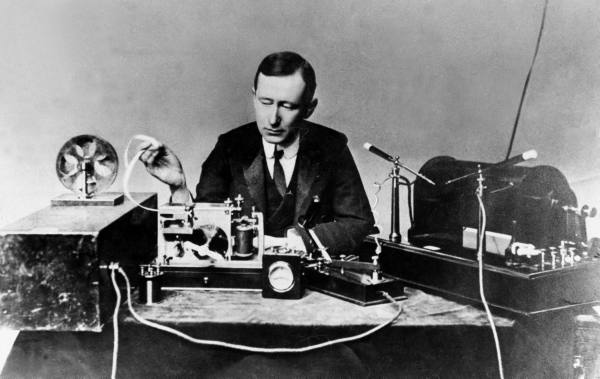Guglielmo Marconi
Episode #5 of the course Inventors who changed the world
Guglielmo Marconi (1874-1937) was an Italian physicist credited with the invention of the radio. However, his patent no. 7777 for “advancements in wireless telegraphy” was overturned in 1943 for including innovations first discovered by Nikola Tesla. Marconi shared the Nobel Prize with Ferdinand Braun in 1909 for wireless telegraphy and also later developed short-wave wireless communication—the radio.
 Guglielmo Marconi, 1908
Guglielmo Marconi, 1908
Marconi was always interested in science and electricity and began work on wireless telegraphy during his teen years. Numerous inventors had tried for 50 years, but a new development inspired Marconi; in 1888, Heinrich Hertz first demonstrated the production and detection of electromagnetic waves (then known as Hertzian or “aetheric waves”).
Marconi read all the scientific literature on the subject and came up with a new system involving many innovations. He used an induction coil to increase the voltage and a simple spark discharger controlled by a telegraph key (for Morse code) to send the signal. For the receiving end, he improved the “coherer” (detector) invented by Edouard Branly. From then on, Marconi’s story was mainly one of increasing the range of the device through numerous refinements—first an aerial, an antenna with a metal plate on top, then reflectors around the aerial to concentrate the radiated energy into a beam.
 Marconi’s first transmitter incorporating a monopole antenna. It consisted of an elevated copper sheet (top) connected to a Righi spark gap (left) powered by an induction coil (center) with a telegraph key (right) to switch it on and off to spell out text messages in Morse code.
Marconi’s first transmitter incorporating a monopole antenna. It consisted of an elevated copper sheet (top) connected to a Righi spark gap (left) powered by an induction coil (center) with a telegraph key (right) to switch it on and off to spell out text messages in Morse code.
In 1896, he moved to London and filed his first patent. He first used balloons and kites to raise his aerials and sent signals several miles across the Salisbury Plains and Bristol Channel. Gaining public interest, he returned to Italy and set up a station capable of broadcasting signals to Italian warships 12 miles (19 km) away. Marconi was a nationalist and eventually a fascist.
The potential value of radio was seen by few at the time, but an engineer cousin of Marconi helped him found a company, and by 1899 a station was established in England to communicate with France. At the same time, British battleships exchanged messages across 75 miles (120 km). Soon after, Marconi equipped two American ships to report to newspapers in New York on the America’s Cup yacht race. This success got the world’s attention, and Marconi filed his main patent for radio, the disputed no. 7777.
 Marconi demonstrating apparatus he used in his first long distance radio transmissions in the 1890s. The transmitter is at right, the receiver with paper tape recorder at left.
Marconi demonstrating apparatus he used in his first long distance radio transmissions in the 1890s. The transmitter is at right, the receiver with paper tape recorder at left.
At that time, many scientists were confident that the curvature of the Earth would forever limit long-distance wireless communication to less than 200 miles. However, in 1901, Marconi sent the first signals across the Atlantic from Cornwall to Newfoundland. In 1902, Marconi received messages during a sea voyage from distances of 700 miles by day and 2,000 miles by night; he thus discovered that radio waves can travel further at night due to reflection off the upper layers of the atmosphere. During the day, waves may be absorbed in the lower atmosphere, which becomes ionized and therefore conducts electricity under the influence of sunlight. In the following decades, Marconi invented many devices and refinements to increase the range and efficiency until finally, in 1918, he sent the first radio message from England to Australia.
During those years, Marconi’s work saved lives. The radio operators on the Titanic, employed by Marconi’s company, were responsible for getting help to save those who survived the ship going down.
Marconi began work on short-wave radio during WWI, seeing that such a system could minimize the interception of transmissions by the enemy. He developed the aerial-and-reflector system for concentrating the beam in a certain direction, which became the basis of modern radio communication.
In 1935, Marconi returned permanently to Italy as an active “fascisti.” He died in 1937, and wireless stations throughout the world observed two minutes of the radio silence that existed before Marconi and never again on Earth.
In our next lesson, we turn to the visionary inventor who competed with both Marconi and Edison and won—Nikola Tesla.
Quote
“Every day sees humanity more victorious in the struggle with space and time.” – Guglielmo Marconi
Recommended book
How We Got to Now: Six Innovations That Made the Modern World by Steven Johnson
Share with friends

